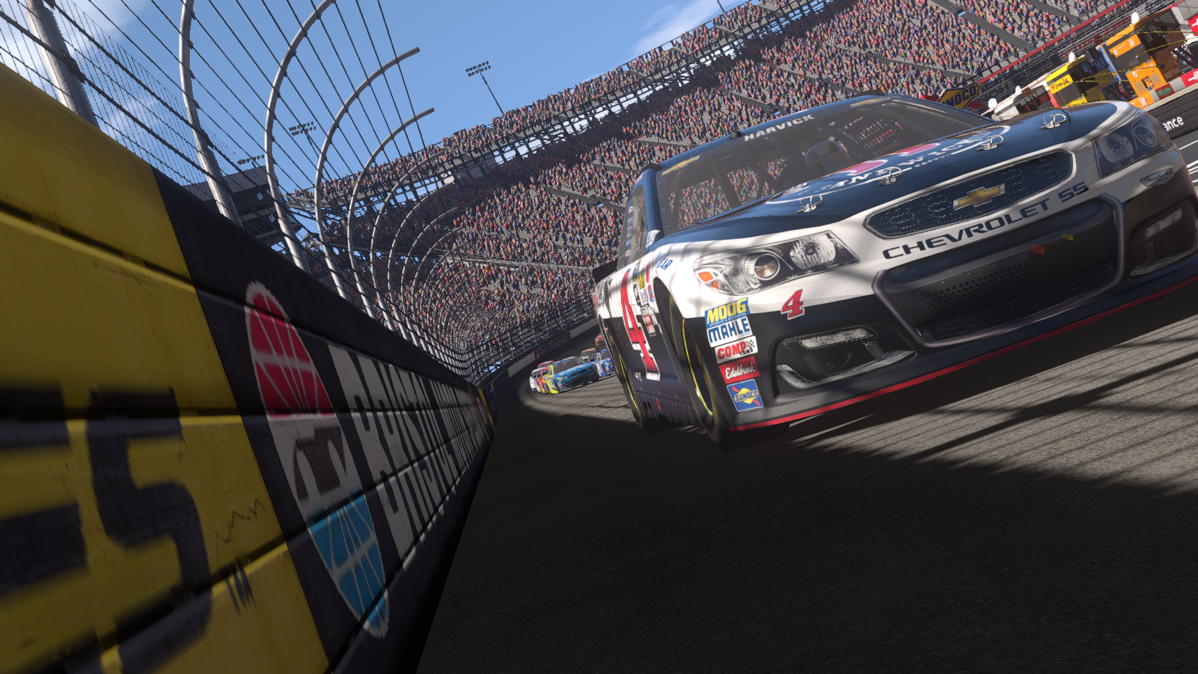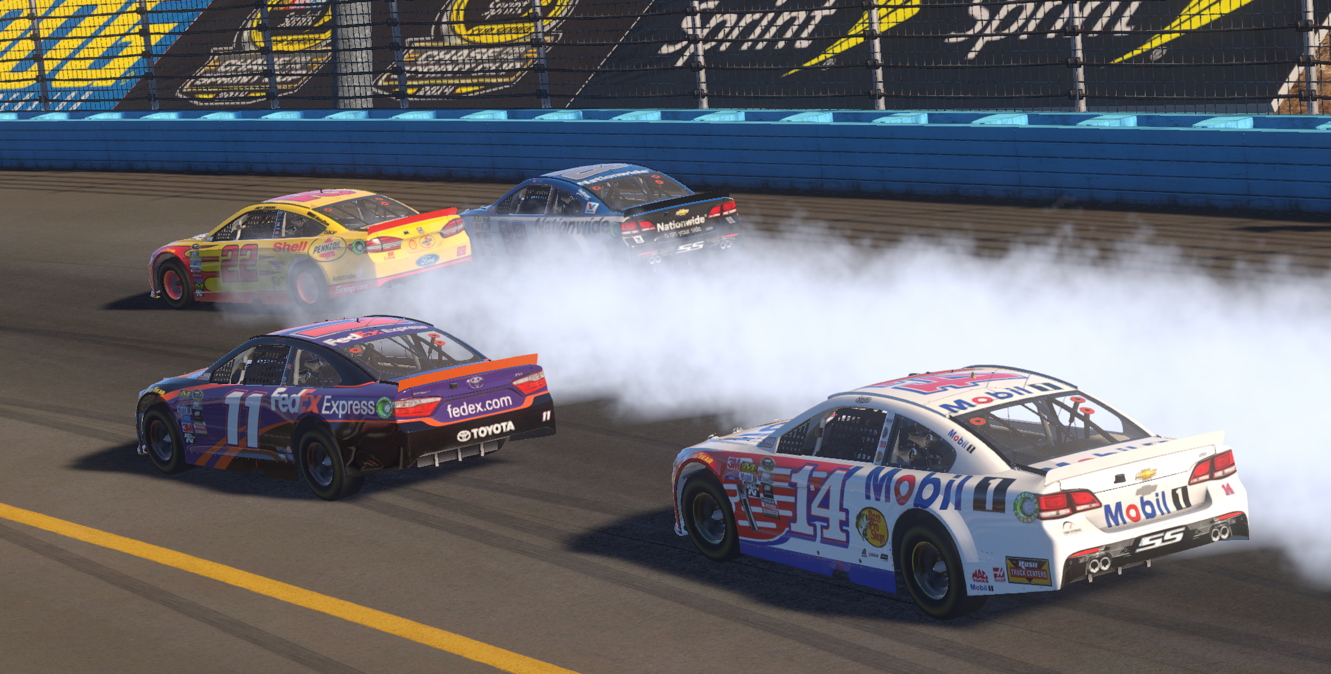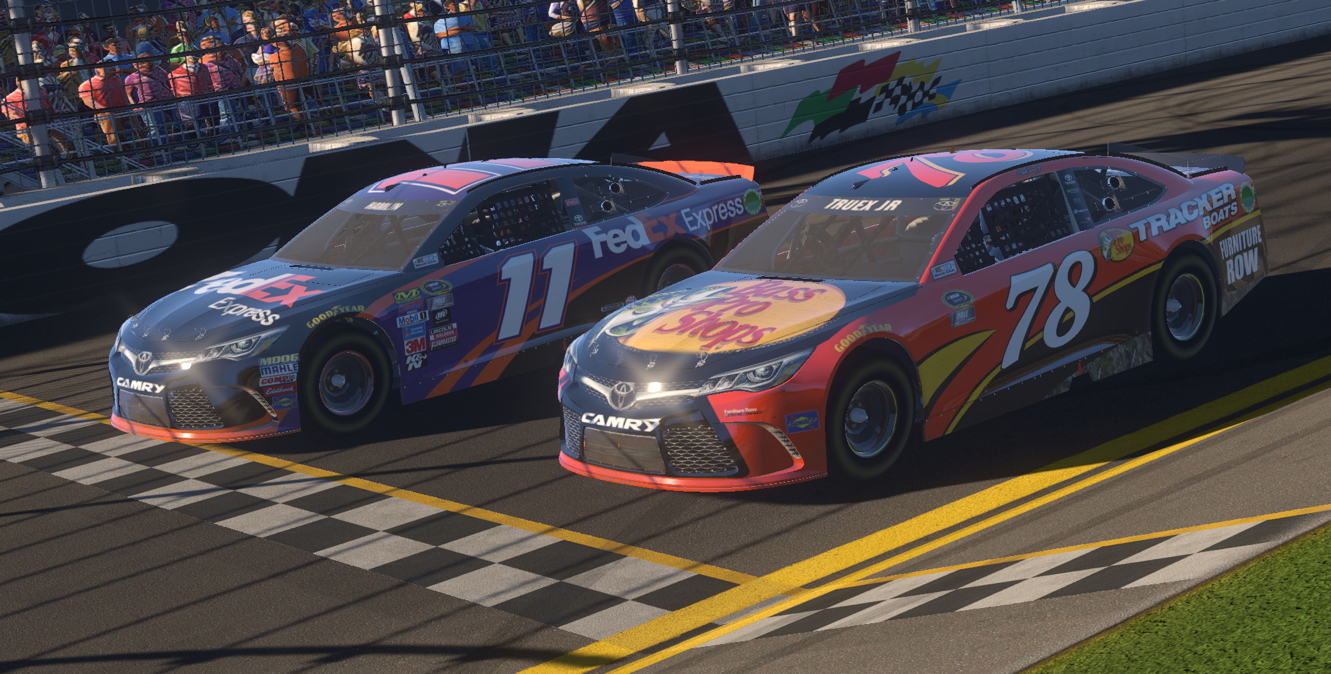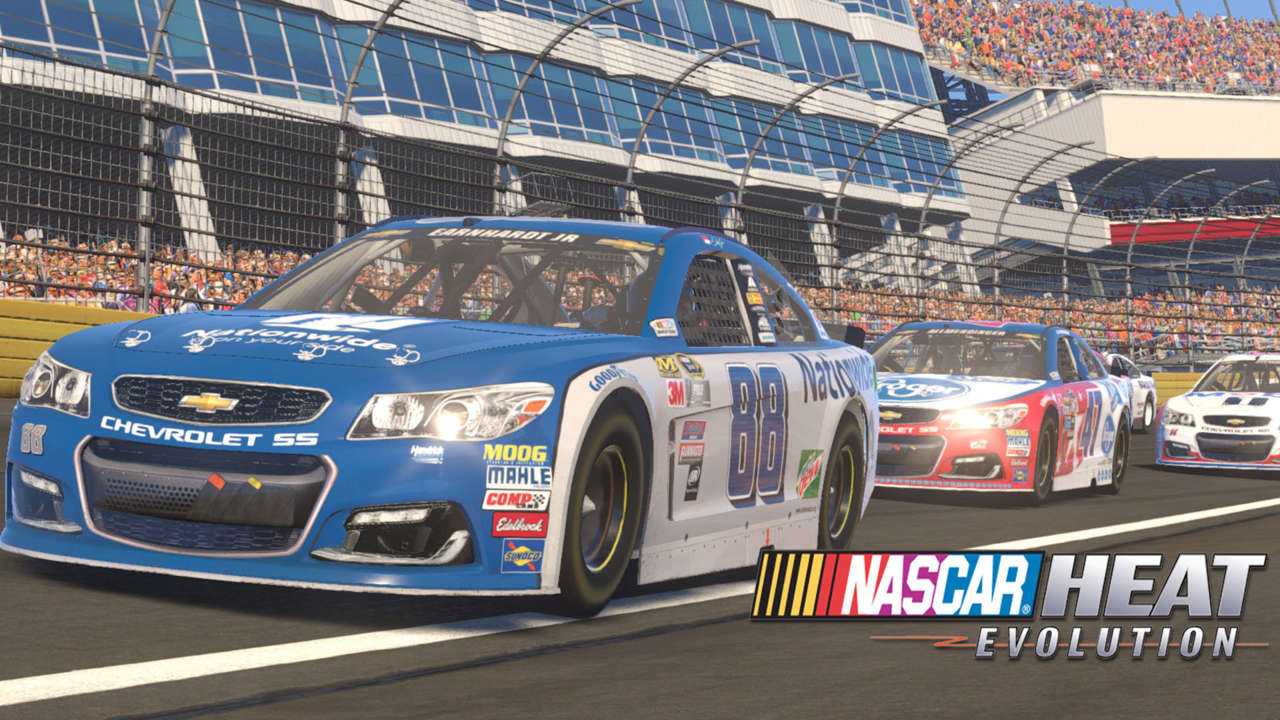There are many things we’ve had to leave behind in console gaming as development of big-budget AAA titles has driven the industry into more of a Hollywood-style model for games. Chief among these is the licensed racing game tie-in. At the turn of the millenium, series like the British Touring Car Championship, Indycar, ChampCar and even European Truck Racing had licensed tie-in games, but with development costs as they are now, most series settle for the broader umbrellas of franchises like GRID and Forza. The only two left standing alone are Formula One and NASCAR, and whilst the former has been generally solid in recent times, the same can’t be said of NASCAR.
After EA bailed in 2009, NASCAR entrusted the license to Eutechnyx beginning in 2011.
“Hang on,” I hear you say, “Weren’t those the guys who made Ride To Hell: Retribution?”
Yup, the very same. And the games that followed were as you’d expect from the company that made gaming’s equivalent of Troll 2… absolutely atrocious. I don’t like using the phrase ‘worst game ever’ as it’s one of those hyperbolic headlines over-used to generate clicks, but when your licensed racing game is rife with basic graphical glitches and sound bugs, has borderline broken physics on both pad and wheel, and AI on a par with drunk frat bros playing Burnout, it’s really hard not to put this up there in that pantheon; especially after these same problems were still not fixed game after game. It was an absolute horror show, and an insult to fans of the franchise.
Finally in 2015 the license was handed to Dusenberry Martin Racing, a brand new studio formed specifically for this venture, and work began on somehow fixing the damage of the past five years whilst also taking the NASCAR franchise onto current-gen for the first time. This was always going to be a tough ask for anyone, let alone an indie team formed specifically to produce a brand new game from the ground up in eighteen months with no previous assets to work from. Despite plenty of hype, it became obvious from early screenshots and trailers that this would prove to be Mission Impossible for NASCAR Heat Evolution. When a game releases on current-gen in 2016 looking like a PlayStation 3 launch title, it’s inevitable — given the current trends in gaming — to expect a backlash; and there’s certainly been plenty of that, some of it obnoxiously excessive.
Some of it, however, is justified.
First off, let’s address the elephant in the room; the graphics really are well below the current standard. When we’re used to beautifully crisp race cars charging around gorgeous real-world racetracks at rock-solid 60FPS, a full-price game with inferior fidelity to many games on past-gen is unacceptable for many players. The main problem isn’t necessarily the cars or tracks; the car models look spot-on, and are painted and rendered with minute attention to detail in a sport where sponsors adorn every square inch of sheet metal. The bigger issue comes with the UI and presentation, which give off a massive stench of mobile game; inevitable given it was built in the Unity engine. It’s incredibly basic and gives off a real air of bargain basement quality.
That impression really isn’t helped by poor sound design. DMR recruited veteran NASCAR game developers Monster Games to help with this venture, and whilst taking assets and elements from older games isn’t always a bad thing, recycling the same low-fi sound effects from the original NASCAR Heat game of 2001 is just inexcusable. Ironically this was one area the ETX games actually got semi-right, so this was the one thing they could’ve copy-pasted into this game.
If you came in expecting a highly polished big-budget title and instead got this bare-bones product for your $60, I can’t blame you for being disappointed. In addition, the fact this game has Day 1 DLC when it contains barely enough in the box as it stands to justify full-price is inexcusable.
However, there’s a reason I call it racing gaming’s Ugly Duckling. Many will dismiss it based on aesthetics, and even I was grimacing navigating the menus initially. However, the moment I hit the track and the green flag dropped, something amazing happened.
I found myself really enjoying this game. Really, REALLY enjoying it.
The fact is, bringing in Monster Games was an inspired move on DMR’s part. Monster’s original run with the franchise in 2001 was impressive particularly in the core racing experience. It’s that element, the feeling of actually racing a stock car at incredibly high speeds against a huge field of opponents, that saves this game and makes it worth your time. The handling model is really nice, particularly on the Simulation setting, with cars feeling very fun to drive right out of the box and the subtle effects of airflow over your car adding some neat touches.
However, by far the best element on show here is the opponent AI. The options to flip from various Adaptive AI settings to a Project CARS-esque sliding scale is something the F1 games could use (although the option to turn off AI rubberbanding in Career mode is much needed), and the AI racers generally behave in very believable and fun ways out on track. Compared to ETX’s brainless lemmings, they are aggressive and smart, adjusting their lines and working you over in order to make the pass — and defending intelligently. On multiple occasions I’d find myself side-by-side with a rival for multiple laps at a time, attacking and counter-attacking in truly epic battles for position. This is a game which makes a battle for 10th place feel as epic as a battle for the win in any other game; high praise indeed.
Other areas the game does well in includes the revamped Career Mode, which whilst lacking options like a paintbooth at present, has a nice progression curve as you earn money to improve your team’s facilities, sign sponsors and improve your race car. This works well with the great AI racing. Those hard-fought top-20 finishes feel doubly satisfying as you work up from trawling Craigslist for new haulers to dominating Sprint Cup racing. There’s also a decent variety of other features, including Challenges, Championship Season and single races with driver ratings which unlock other in-game elements, and a trio of simple online modes that seem to be working well at time of writing. The potential for future additional online modes such as Co-Op Championship are also not off the table either.
In conclusion, treating this game as a big-money sports tie-in title is a big mistake, as you’ll be spectacularly let down. And for $60, one should expect a more complete and high-quality presentation. However, if you treat this game for what it effectively is — a middle-tier indie NASCAR game — and pay accordingly for it, there’s more than enough here to enjoy. The fact that it’s an improvement over the Eutechnyx era of games isn’t much of a complement in itself, but treat this game almost like NASCAR’s F1 2015 moment; a very limited first iteration on current-gen with a really strong core hiding beneath issues that will hopefully in time be ironed out. Provided we see a similar leap forward next year as we did with F1 2016, this game will long-term be a worthwhile entry in the franchise.










Published: Sep 19, 2016 03:13 am